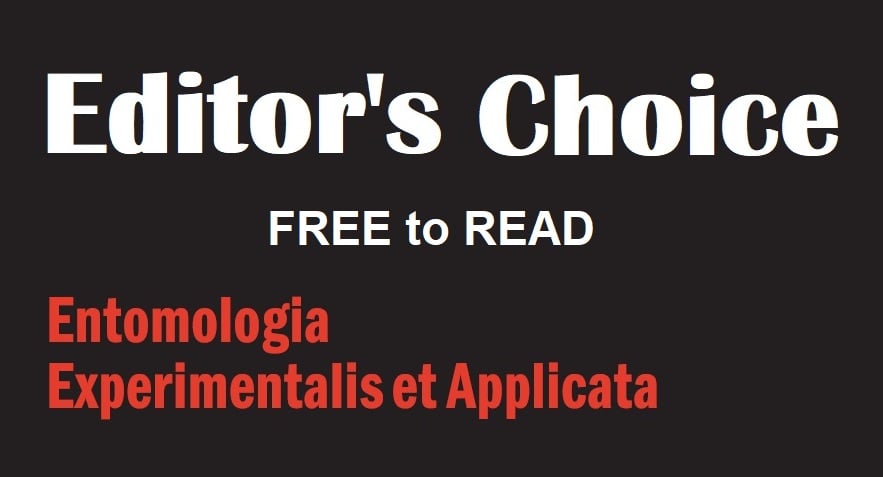Entomologia Experimentalis et Applicata
Journal list menu
Export Citations
Download PDFs
August 2018
Modeling temperature-dependent development rate and phenology in insects: review of major developments, challenges, and future directions
- First Published: 05 July 2018
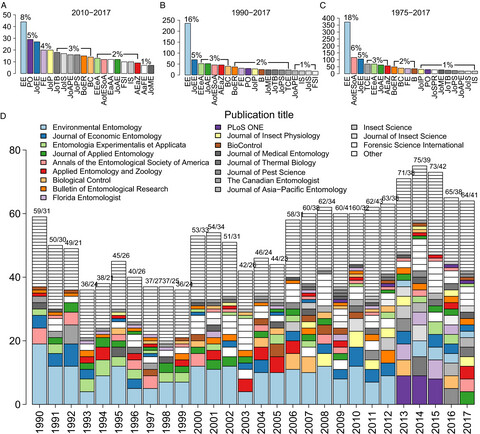
The study of insect responses to temperature has a long tradition in science and is still topical. We present a review of the literature and discuss recent advances and future directions for phenology-modeling based on temperature-dependent development rate. We highlight the need for a change of paradigm toward a system-based approach in order to overcome current challenges and to predict insect phenology more accurately, with direct implications in agriculture, conservation biology, and epidemiology.
July 2018
Do pygidial secretions of dung beetles have the potential to repel urban pest ants?
- First Published: 13 August 2018
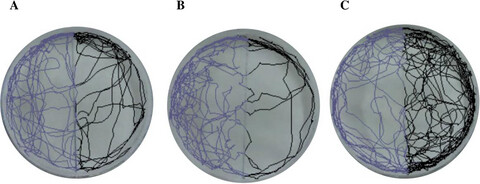
We tested whether pygidial secretions of the dung beetle Canthon smaragdulus (Coleoptera: Scarabaeidae) could work as repellents against the exotic urban pest ant Tapinoma melanocephalum (Hymenoptera: Formicidae). The locomotor behaviour of individual ants was affected by pygidial secretions from C. smaragdulus males, females, or male-female couples. Female secretions had a stronger effect than male secretions, and the changes in locomotor behaviour were dose dependent. Hence, pygidial secretions from dung beetles may be explored further in future urban pest management strategies.
June 2018
Preference–performance in a specialist sawfly on congeneric host plants
- First Published: 05 July 2018
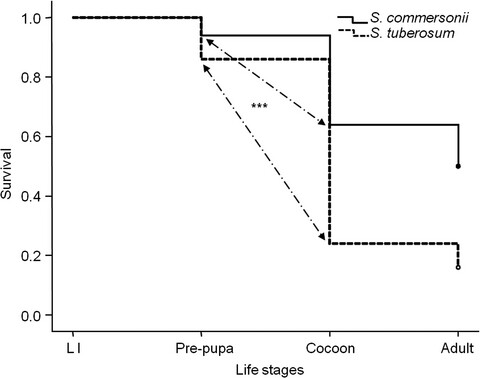
We explored the preference–performance linkage in the monophagous sawfly Tequus schrottkyi (Hymenoptera: Pergidae) on its host plant, the wild potato Solanum commersonii (Solanaceae) and the cultivated potato, S. tuberosum. Our results demonstrated a positive preference–performance correlation, as T. schrottkyi offspring performed better on S. commersonii and females oviposited almost exclusively on this Solanum species. The results are discussed within the framework of the preference–performance hypothesis and the chemical ecology of insect–plant interactions.
May 2018
Promises and challenges in insect–plant interactions
- First Published: 10 May 2018
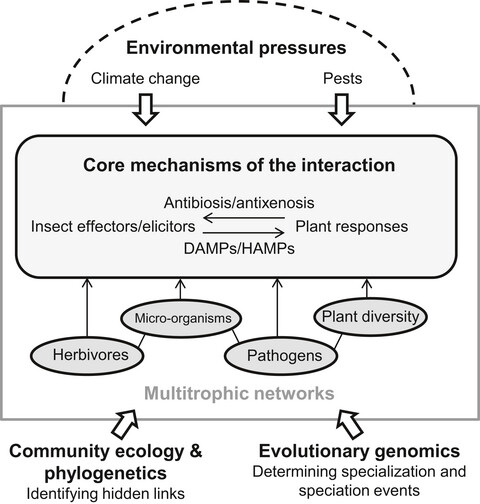
There is tremendous diversity of interactions between plants and other species, ranging from antagonism to mutualism. Determining the cellular and molecular dialogue between plants, microbes, and insects, and its ecological and evolutionary implications is important. Integrative multidisciplinary approaches and the rapid evolution of technology may provide new solutions to the major ecological and societal issues ahead of us. This article reviews the major ground-breaking themes that have been identified as promising and challenging issues in studies on insect–plant interactions.
April 2018
Temperature and humidity acclimation increase desiccation resistance in the butterfly Bicyclus anynana
- First Published: 10 April 2018
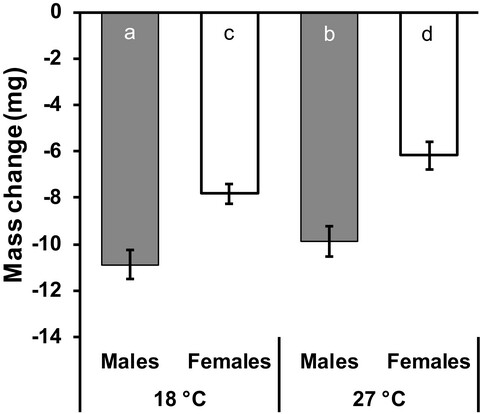
Desiccation resistance (the ability to reduce water loss) is an ecologically important trait relevant to all terrestrial organisms, but its plasticity is not well understood. Using a tropical nymphalid butterfly, we show that mass loss (used as proxy) was reduced under conditions indicating increased desiccation risk, that is, high temperature (see Fig.) or low relative humidity, suggesting adaptive phenotypic plasticity. We argue that more studies on plastic capacities in traits relating to desiccation resistance are needed to better understand species responses.
March 2018
Life histories of an invasive and native ladybird under field experimental conditions in a temperate climate
- First Published: 06 March 2018
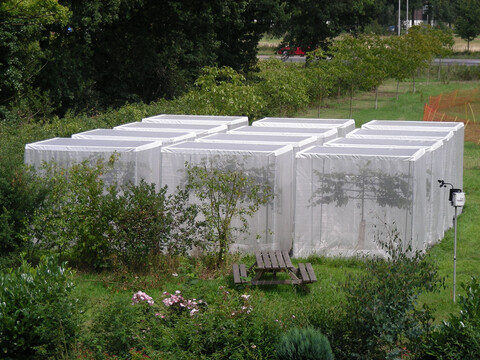
Immature development time and survival of invasive Harmonia axyridis and native Adalia bipunctata (both Coleoptera: Coccinellidae) are determined under field experimental conditions with ample prey. Both ladybird species apparently hardly interacted and intraguild predation did not cause much mortality. Immature survival is considerably higher for H. axyridis than for A. bipunctata, resulting in faster increase of H. axyridis populations, which is one of the factors that may explain its invasion success.
February 2018
Limb ablation and regeneration in Harmonia axyridis: costs for regenerators, but benefits for their progeny
- First Published: 23 February 2018

Harmonia axyridis (Coleoptera: Coccinellidae) in China are capable of regenerating a forelimb during pupation. In this study, we tested a population invasive in North America and found that virtually all beetles surviving the operation regenerated the limb. Compared to controls, ablated/regenerated beetles spent longer in pupation, and emerging females were smaller, but their reproductive performance was similar. Offspring of crosses that included a regenerated parent had faster larval development and daughters were heavier at emergence.
January 2018
How to become larger: ontogenetic basis of among-population size differences in a moth
- First Published: 06 February 2018
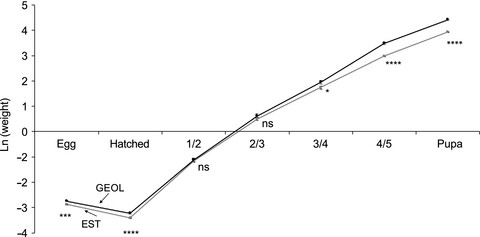
South European representatives of the geometrid moth Ematurga atomaria are twice as large as their north European conspecifics. We demonstrated that the size difference accumulated in the course of larval development by means of longer instar-specific growth periods. Eggs were larger in the southern population as well, though this difference did not carry over to later stages.




